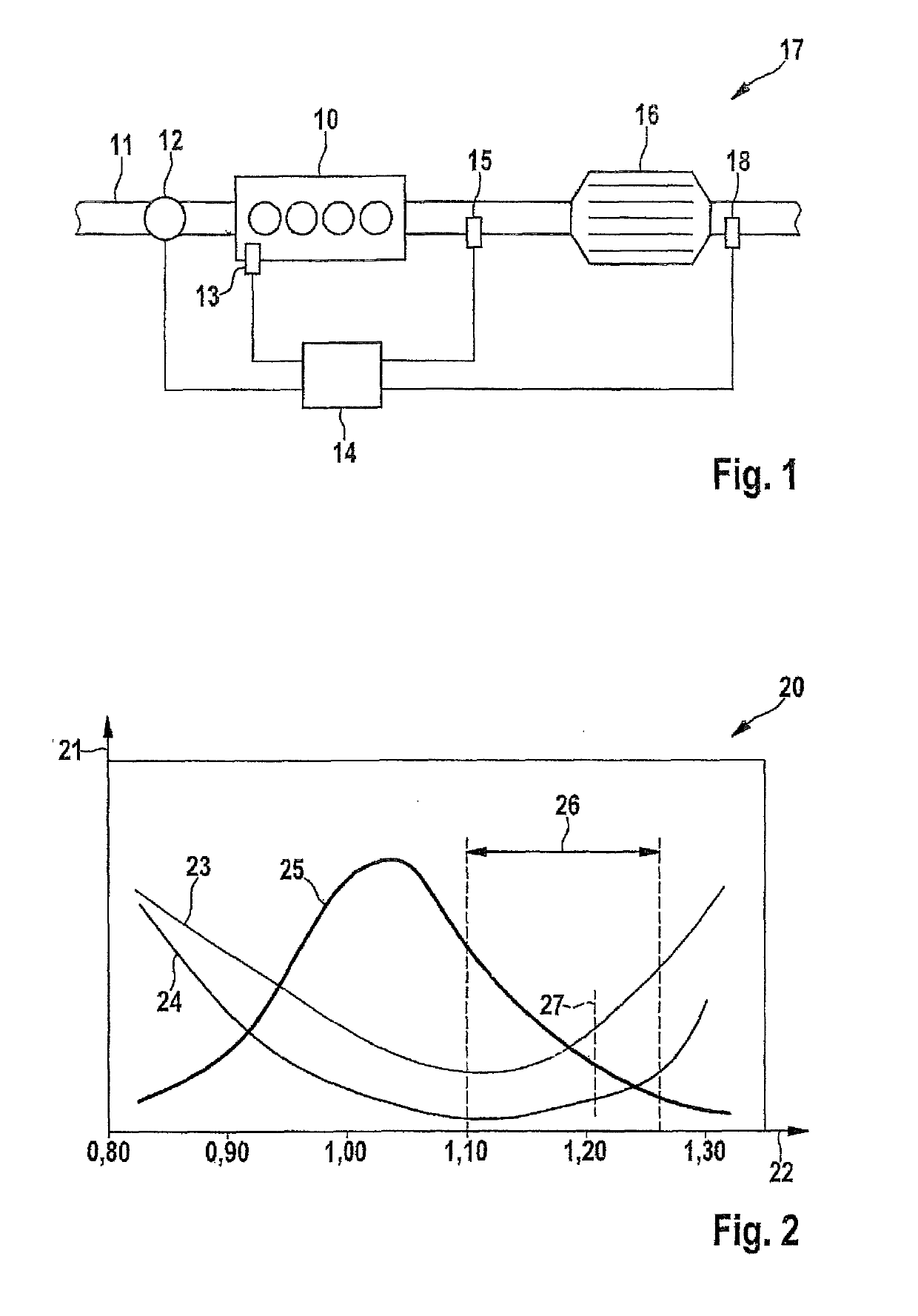Method and device for reducing the emissions of an internal combustion engine
a technology of internal combustion engine and emission reduction, which is applied in the direction of combustion engine, electric control, machines/engines, etc., can solve the problems of reducing the emission of nitrogen oxide, achieving the purification effect of the convertor, etc., and achieve the effect of reducing the emission
- Summary
- Abstract
- Description
- Claims
- Application Information
AI Technical Summary
Benefits of technology
Problems solved by technology
Method used
Image
Examples
Embodiment Construction
[0020]FIG. 1 schematically illustrates the technical environment in which the method of the present invention may be used. An internal combustion engine 10, which is realized as gasoline engine having externally supplied ignition, is supplied with combustion air via an air supply 11. By way of example, the air quantity of combustion air is able to be ascertained with the aid of an mass air flow meter 12 in air supply 11. The supplied air quantity is used for ascertaining the fuel quantity to be added at a lambda value to be precontrolled or adjusted, for ascertaining exhaust gas parameters such as an exhaust gas quantity, a volumetric flow or an exhaust-gas rate. The exhaust gas of internal combustion engine 10 is discharged via an exhaust duct 17, in which a catalytic converter 16 is situated. Furthermore, a first lambda probe 15 upstream from catalytic converter 16 and a second lambda probe 18 downstream from catalytic converter 16 are disposed in exhaust tract 17, whose signals a...
PUM
 Login to View More
Login to View More Abstract
Description
Claims
Application Information
 Login to View More
Login to View More - R&D
- Intellectual Property
- Life Sciences
- Materials
- Tech Scout
- Unparalleled Data Quality
- Higher Quality Content
- 60% Fewer Hallucinations
Browse by: Latest US Patents, China's latest patents, Technical Efficacy Thesaurus, Application Domain, Technology Topic, Popular Technical Reports.
© 2025 PatSnap. All rights reserved.Legal|Privacy policy|Modern Slavery Act Transparency Statement|Sitemap|About US| Contact US: help@patsnap.com


